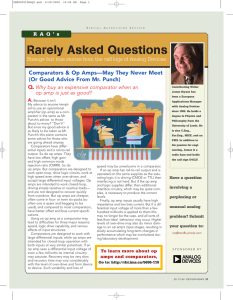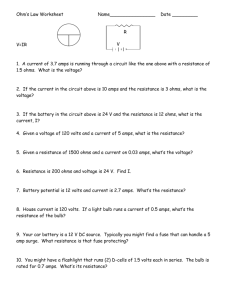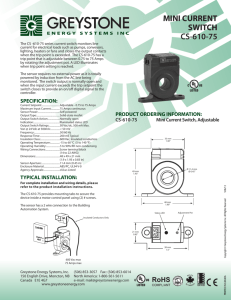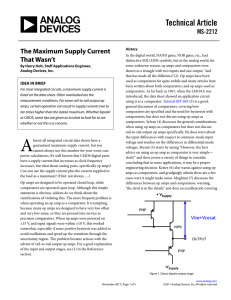Op Amps as Comparators
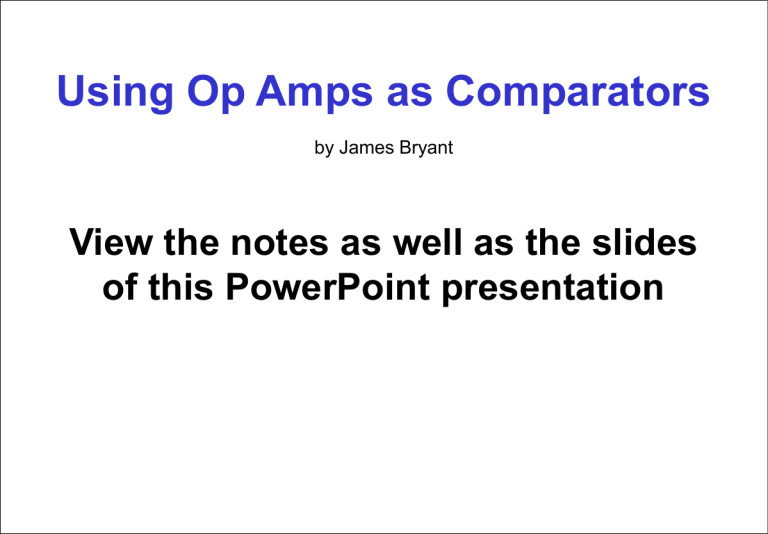
Using Op Amps as Comparators
by James Bryant
View the notes as well as the slides of this PowerPoint presentation
Using Op Amps as Comparators
Diagrams of op amps & comparators look very similar
But a comparator gives a logic output indicating the relative potentials on its two inputs
An op amp amplifies the differential voltage between its two inputs – and is designed always to be used in closed-loop applications
Using Op Amps as Comparators
When considering using an op amp as a comparator remember Mr. Punch’s advice to those about to marry
DON’T!
The rest of this presentation consists of advice for those who have not taken this advice
Using Op Amps as comparators
Why use an op amp as a comparator?
Convenience
(use the “spare” device in a quad)
Economy
Low I b
Low V os
Using Op Amps as comparators
Why NOT use an op amp as a comparator?
Speed
(saturation means that op amps are slower)
Inconvenient input structures
Inconvenient logic structures
Stability / hysteresis
Using Op Amps as Comparators
SATURATION makes an op amp used as a comparator slower than the same amplifier used closed-loop
Using Op Amps as Comparators
DESATURATION is slow
– and is rarely characterized on the data sheet
Testing for yourself is unreliable since batch-batch variations may be large
Using Op Amps as Comparators
V dd
V ss
A rail-to-rail op amp will drive CMOS or TTL logic using the same supply.
If the devices have different supplies interface circuitry is necessary.
Using Op Amps as Comparators
The simplest interfaces between comparators and logic using different supplies are inverters using a single transistor or MOSFET
Using Op Amps as Comparators
An inverter using complementary MOSFETs
(P-channel and N-channel) draws no static current
Using Op Amps as Comparators
A clamp amplifier such as the AD8036 can have its output swing limited to the logic supplies without the use of any additional components
Using Op Amps as Comparators
An ECL interface requires just three resistors
Using Op Amps as Comparators
An ideal op amp has infinite Z in and zero bias current
Real life is not so pretty
Using Op Amps as Comparators
An ideal op amp has infinite Z in and zero bias current
Real life is not so pretty
Except with current-feedback op amps
(which have asymmetric input structures and should not be used as comparators) it is reasonable to assume that C and I b are small and R is large
But designs must consider the effects of the actual values
Using Op Amps as Comparators
An ideal op amp has infinite Z in and zero bias current
Real life is not so pretty
Except with current-feedback op amps
(which have asymmetric input structures and should not be used as comparators) it is reasonable to assume that C and I b are small and R is large
But designs must consider the effects of the actual values
And of any nonlinearities
Using Op Amps as Comparators
RTFDS
( Read The Friendly Data Sheet)
Determine if nonlinearities in your op amp’s input will affect its operation as a comparator
LOOK FOR
Low values of absolute maximum differential input voltage
Graphs of bias current vs. differential or common-mode input voltage
(and especially graphs with discontinuities or gross nonlinearities)
Any other input specification or graph which may indicate nonlinearities
WILL YOUR PROPOSED APPLICATION WORK
WITH A COMPARATOR WHICH BEHAVES IN THIS WAY?
Using Op Amps as Comparators
PHASE INVERSION
Some older types of FET op amp and even a few bipolar types suffered from a phenomenon called phase inversion or phase reversal
If the common-mode voltage went outside certain limits the inverting and non-inverting inputs became interchanged
This effect would be devastating in a comparator and it
Is important to ensure than any op amp used as a comparator is either free from phase inversion or that it will never be used with a common-mode voltage which causes phase inversion
Using Op Amps as Comparators
INSTABILITY
Op amps used as comparators are working at their full open-loop gain and may suffer instability or latch-up due to feedback from stray capacity or due to common ground impedances
Using Op Amps as Comparators
HYSTERESIS
Using controlled positive feedback to produce hysteresis can reduce the risk of oscillation
The amount of hysteresis is predictable and is controlled by the ratio of the positive feedback resistors
Output Swing: V s
Hysteresis
V s
R
1
R
2
R
1
Signal applied to R
1 must come from a source impedance which is much lower than R
1
Using Op Amps as Comparators
HYSTERESIS
Calculation of thresholds when the reference is not midway between the supplies
Comparator output voltages are V p
& V n
Reference voltage is V r
Positive threshold is
R
2
V r
R
1
R
1
V p
R
2
Negative threshold is
R
2
V r
R
1
R
R
2
1
V n
Using Op Amps as Comparators
CONCLUSION
OP AMPS MAY BE USED AS COMPARATORS
BUT BE CAREFUL!
Read The Friendly Data Sheet (RTFDS)
Calculate the effects of non-ideal parameters
Experiment
Always interpret your results a little pessimistically
